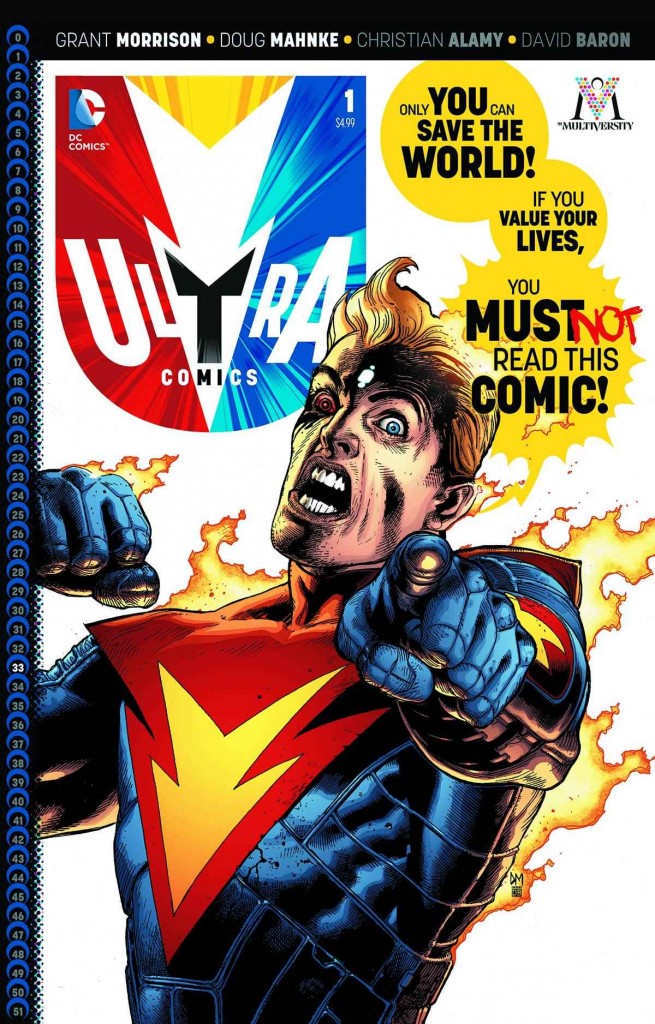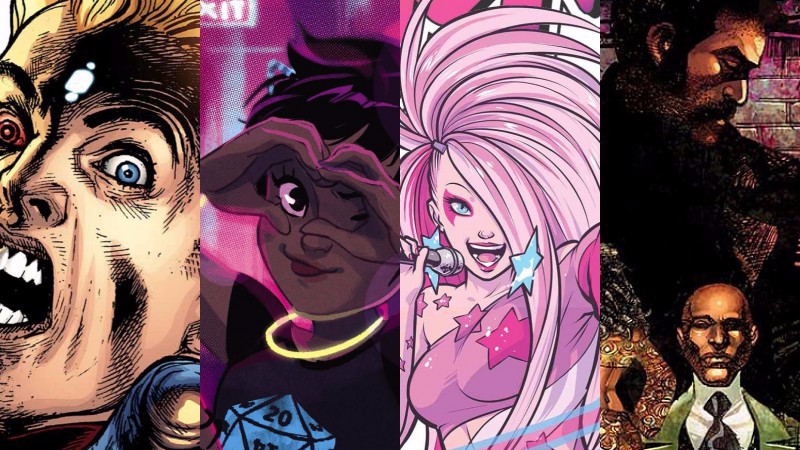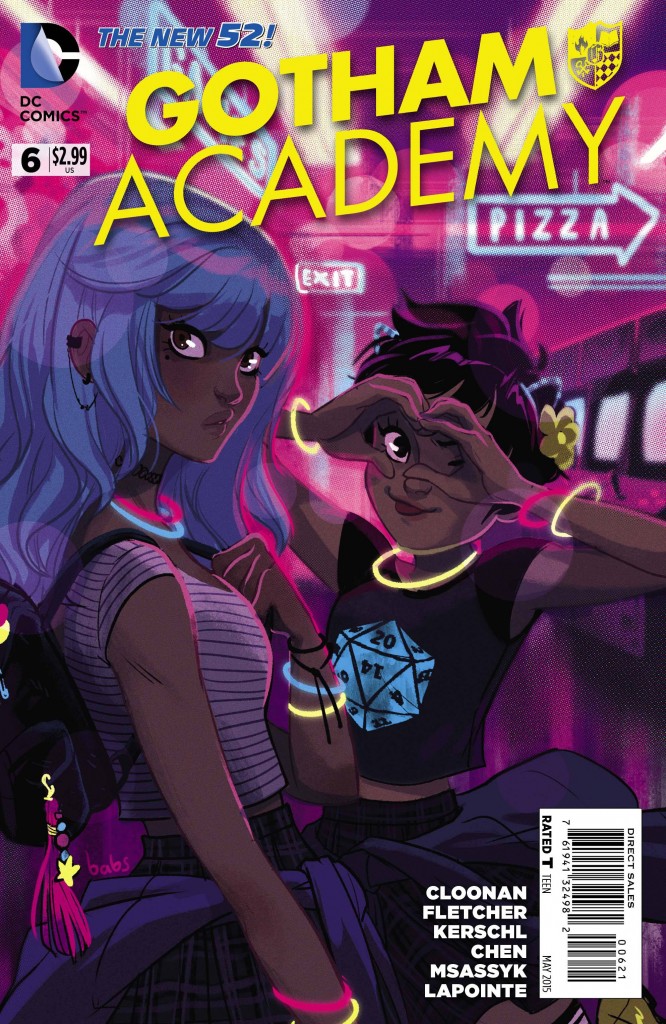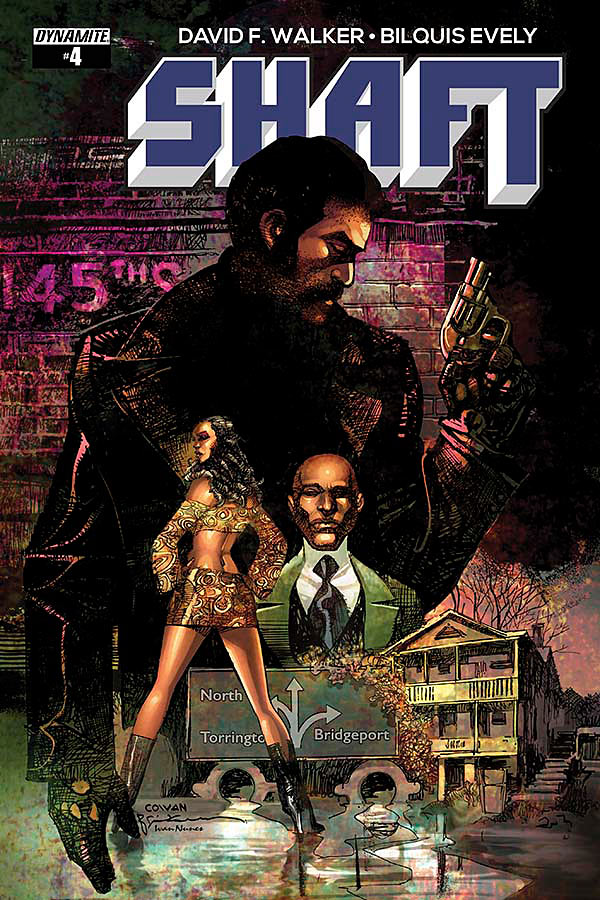By Molly Jane Kremer and Jarrod Jones. Our Week In Review serves to fill in the gaps our frequently verbose comic book coverage leaves behind. Each week, we take a brief look into the books that demand attention.
IDW/$3.99
Written by Kelly Thompson.
Art by Sophie Campbell; colors by M. Victoria Robado.
MJ: It’s been almost thirty years since the Jem television show debuted, and while cartoons like He-Man and the Masters of the Universe, G.I. Joe, and Transformers inspire heart-stoppingly heady nostalgia in members of my generation, none of them resonated as strongly with young female viewers (and toy buyers) like Jem. And with a Jem and the Holograms feature film scheduled for release this autumn, IDW’s decision to acquire the comics licensing for Jem and the Holograms seems to be a wise one indeed.
The art, as expected from penciller/inker Sophie Campbell, is gorgeous. While she hasn’t rendered many comic book interiors since her amazing run on Image’s Glory (with Joe Keatinge), Jem is an absolutely perfect fit. Her work on this book can only be described as “glam-cute,” depicting the Holograms with amazingly colored and styled hair with fantastic outfits on diverse body types, each character equally adorable and punked-out in their own way. M. Victoria Robado’s colors are vibrant, with luscious pinks and purples dominating the pages. Each character has a color-theme, and Robado makes sure Shana’s purples and Aja’s blues are perfectly shaded, with just enough variation for depth (and some sparkle). A few panels could use more background details, but with Campbell’s incredibly expressive faces and Robado’s bold coloring, there is plenty of compensation.
The comic’s all-female cast are all fully-realized and interesting, especially Jerrica, whose acute shyness and determination make her a protagonist to really get behind and empathize with. The Holograms’ chemistry and back-and-forth are very endearing as well, and this reader is looking forward to seeing their relationships with each other grow and unfold. The comic works well as a first issue and deals completely with origins – you’ll require no previous knowledge of Jem to achieve maximum enjoyment. And while only seeing Jem herself on the last page was a slight let-down, we have a whole series in which to enjoy her in all her outrageous glory.
9 out of 10
 The Multiversity: Ultra Comics#1
The Multiversity: Ultra Comics#1
DC Comics/$4.99
Written by Grant Morrison.
Art by Doug Mahnke, Christian Alamy, Mark Irwin, Keith Champagne, Jaime Mendoza; colors by Gabe Eltaeb and David Baron.
SPOILER-FREE. JJ: It has arrived. The comic book that will either save or destroy DC’s multiverse. But now that it’s here, how do we approach it? Is it the fourth-wall shattering superhero saga that we have all grown to fear? Or do we accept it as satire, a commentary on contemporary superhero fiction?
Grant Morrison seems to be telling us that the choice is entirely up to the reader. As Ultra Comics – the living manifestation of a superhero comic, and Morrison’s pinnacle of Aryan perfection – says to the dreaded Intellectron, all text is vulnerable to criticism. But when a book like Ultra Comics #1 is so completely self-aware, is it even worth the effort to deconstruct it? After all, deconstructionism is the primary function of Grant Morrison’s The Multiversity, a loving ode to the superhero genre that has provided the writer world-wide fame, and the necessary creative room to dabble in the sorcery of his written word. But is Ultra Comics the apex of Morrison’s body of work? There are moments where it certainly feels so.
Throughout The Multiversity, Morrison has peppered his universe-spanning yarn with Ultra Comics — you can spot scenester-Batman reading it in The Just, among many other instances — and he’s taken special care to imbue the reputation of the book with a mounting dread. The comic’s very cover is a warning, singling out the reader with an intense urgency to drop the book and walk away. That might have been considered a ballsy move for a publisher like DC Comics — to dare its readers to pass on reading their work — but really, who the hell would pass on witnessing oblivion unravel? Ultra Comics has the attention-grabbing chutzpah of a Silver Age Kirby/Lee collaboration. It challenges you to look away, when actually doing so would be an exercise of absolute willpower.
But with all this frantic, reality-bending insanity running about, one has to ask: Is Grant Morrison simply fucking with us at this point? Or did all of those DMT sessions really unlock a higher consciousness within him that few others can comprehend? Is Grant Morrison really the shaman of superhero comics, or has his schtick finally grown way too old? Ultra Comics #1 has answers. But don’t forget: While the book gives you the illusion of control, it’s really Grant Morrison who is pulling your strings.
8 out of 10
Gotham Academy #6
DC Comics/$2.99
Written by Beccky Cloonan and Brenden Fletcher.
Art by Karl Kerschl and Mingjue Helen Chen; colors by Msassyk, Serge LaPointe, and Mingue Helen Chen.
MJ: Gotham Academy #6, consistently one of the most enjoyable comics currently on the stands, neatly and effortlessly rounds out the series’ first story arc. It opens on the cliffhanger where the last issue left off, with both Batman and Killer Croc making extended appearances throughout the comic. Croc continues to be given a sympathetic side, and a flashback sequence (beautifully illustrated by the talented Mingue Helen Chen) fills in much of the mysteries about Olive’s mother. Chen contributes a total of five pages, and they match Karl Kerschl’s art – and the rest of the book’s aesthetic – extraordinarily well: if monthly scheduling necessitates an additional artist to keep the book coming out on time, she would be an excellent fit.
The book looks as beautiful as it usually does – Karl Kerschl never, ever disappoints with Gotham Academy’s art – and the pages at the beginning (full of fogginess and flame) are gorgeously colored. Strangely, the fifth page has an odd coloring error omitting Olive’s dress’ lace-detail that, for one panel, makes her look nearly naked. Additionally, towards the end of the issue, the inks start to take on a sketchier quality, and the colors look much more flat. While it doesn’t look bad (not bad at all – it’s actually a nice visual cue to how the gang’s grown and matured over the last few issues), it’s a jarring change after five months of Msassyk’s deep, rich, animation-like colors.
An epilogue containing a huge tease about the future of the series (and a new matriculating student) could cause some alarm that the series might be switching its focus and aligning itself more resolutely into the Batman universe. But this issue, successfully utilizing both Batman and Killer Croc without overwhelming or sidetracking the current narrative, makes the case that despite adding a new and colorful character, Cloonan, Fletcher, and Kerschl et al will ensure the same level of high quality they’ve maintained since the series’ lauded debut.
8.5 out of 10
Dynamite/$3.99
Written by David F. Walker.
Art by Bilquis Evely.
JJ: I’m perfectly aware that Dynamite’s Shaft #4 wasn’t released this past week. In the constant shuffle of reviewing as many comics as possible on this li’l site of ours, sometimes I have to set aside a book that I’m otherwise really, really into. Well, this week, I tossing aside the usual superhero nonsense to hopefully bring some added attention to a book that is wholly deserving of it.
Of course, I’m talking about Shaft — and no, stop, I don’t care if you “can dig it;” spouting trivial nonsense like that only serves to dilute the uncanny artistry that’s taking place on this book. Dynamite may appear to be clamoring for relevancy in this crazy industry with their stable of ancient, licenced film adaptations (comic book takes on Red Sonja, Army of Darkness, and Zorro are among their many offerings), but make no mistake: David F. Walker and Bilquis Evely’s Shaft is Dynamite’s ace in the hole. This is the comic that you need to be reading.
Walker’s words have an unnerving potency in Shaft, which takes what would be a mere origin story and turns it into something that feels new, vital, and exciting. His reverence for 70’s-era Harlem is dauntless — reading Shaft can easily make one yearn for the days where we got by on our primal instincts instead of relying on smart phones — and how he characterizes John Shaft within the zeitgeist is a marvel unto itself. With Walker’s guiding hand, John Shaft may be a man more than capable of protecting himself, but once he’s swallowed whole into Harlem’s seemier world, Shaft has begun to endure a severe humbling. In Shaft, the indomitable private dick has a long way to go before he achieves the posturing swagger of a street-bound James Bond. And the journey thus far is marvelous.
Evely’s tremendous artwork gives Walker’s saga real heft; each panel is a gorgeous, realistic wide-screen shot worthy of Gordon Parks’ grit and Urs Furrer’s eye. The level of period detail that goes into each issue of Shaft boast pain-staking accuracy, from the amount of pin-stripes found on some fellow’s three-piece suit to the detail found on the grill of a boat-length automobile. And Harlem shimmers with real life; each street corner is populated with individualized human beings, each with their own defining characteristics, attire, and personalities. There isn’t much that’s taken for granted in Evely’s incredibly rendered world. Paired with Walker, Evely is giving the best work of his career.
With four issues in the bag, there’s still plenty of time to get while the getting’s good. If Shaft isn’t a important fixture of your monthly comic book routine, invest four dollars and all the time you need to absorb this thrilling book, and then ask yourself why. And then thank the comic gods, because you just found four-colored nirvana.
10 out of 10
Agree? Disagree? What comics are YOU reading each week? We want to know! Tell us about it in the comments section below.
















